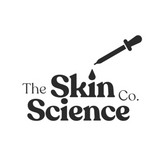Part 3: Developing Your Product Line – Ingredients and Formulations
Step 10: Understand Skin Basics
Know the different skin types to cater to specific needs.
- Normal, Dry, Oily, Combination, Sensitive
Action Point: Decide which skin types your products will target.
Step 11: Define Your Product Range
Start with a focused selection.
-
Product Types:
- Cleansers
- Toners
- Serums
- Moisturizers
- Masks
Action Point: Choose 2-3 core products to develop initially.
Step 12: Research and Select Ingredients
Choose ingredients that align with your brand values and product goals.
-
Popular Ingredients and Benefits:
- Hyaluronic Acid: Hydration
- Vitamin C: Brightening
- Niacinamide: Pore refinement
- Botanical Oils: Nourishment
Action Point: List ingredients that suit your products and research their benefits.
Step 13: Source High-Quality Ingredients
Quality is paramount for efficacy and safety.
-
Tips:
- Opt for certified organic where possible.
- Ensure suppliers provide Certificates of Analysis (COA).
- Consider sustainability and ethical sourcing.
Action Point: Identify reputable suppliers, like The Skin Science Company, for high-quality ingredients.
Step 14: Formulate Your Products
Balance is key in creating effective formulations.
- Work with Experts: Consider collaborating with a cosmetic chemist.
- Understand Percentages: Correct active ingredient levels are crucial.
- Preservatives and pH Balance: Ensure product safety and skin compatibility.
Action Point: Begin formulating your products, starting with small batches.
Step 15: Testing and Compliance
Ensure your products are safe and meet regulatory standards.
-
Testing:
- Stability Testing
- Microbial Testing
- User Trials
-
Compliance:
- Understand local cosmetic regulations.
- Proper labeling requirements.
- Necessary certifications (e.g., SDS, COA).
Action Point: Allocate time and resources for thorough testing and compliance checks.
Step 16: Design Functional and Appealing Packaging
Packaging protects your product and attracts customers.
-
Considerations:
- Functionality: Ease of use and product protection.
- Aesthetics: Reflect your brand identity.
- Sustainability: Eco-friendly materials if aligned with your values.
Action Point: Select packaging options and design labels that comply with regulations.



